Neanderthals
Archeologist Tim Reynolds on Mousterian tools, cross-species interactions, and Neanderthal language
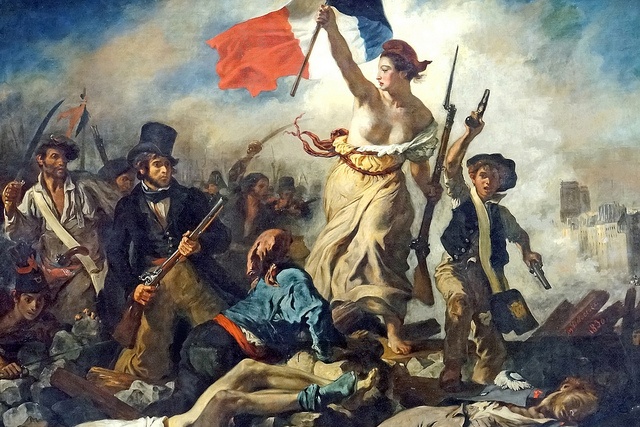
Political clubs were a new form of political activity in response to the new freedom of public expression. They started in France in 1789. Clubs, as such, were not new. The latter half of the eighteenth century had seen the spread of a wide range of informal groups in a movement of what historians call ‘Enlightenment Sociability’. They included salons or private discussion groups, more formal intellectual associations, and masonic lodges, all devoted to socializing and talking and reading about the latest ideas. But mostly, they avoided politics as a forbidden topic. When the old political authorities disappeared with the Revolution, however, the club model was adopted as an obvious and familiar way of discussing issues of the day and mobilizing opinion behind the new order of things.
France before 1789 was an absolute monarchy with few and limited representative institutions, where nobody had the right to resist the authority of the king. Politics was seen as the private business of the monarch, and all publications were subject to government censorship. But military overstretch over the century led by the 1780s to a financial crisis which the king felt unable to resolve without consulting representatives of the taxpayers. They resisted his plans, driving the monarchy into bankruptcy in the summer of 1788. Royal authority collapsed as Louis XVI gave in to demands for the election of the Estates-General, a national representative body that had not met since 1614. In June 1789, the Estates transformed themselves into the National Assembly and declared that the Nation, not the king, was now the sovereign authority in France. The storming of the Bastille in Paris on 14 July prevented the king from crushing this defiance, and the National Assembly began the massive work of reforming French institutions and society from top to bottom and giving the country a written constitution. No longer subject to censorship, political clubs began to form all over the country to support this work of reform.

Mostly they followed the lead of a group of members of the Assembly who, in the autumn, began to discuss their political plans in a club called the Society of the Friends of the Constitution. They met in a former convent of Dominican friars called the Jacobins. The idea of a political club originated with deputies from Brittany, who had begun to meet informally to concert action earlier in the summer in the so-called ‘Breton Club’. Soon non-deputies were applying to join the society, and provincial counterparts were being established in major cities to discuss current affairs, read the newspapers, correspond with each other, and petition the authorities. They applied to the ‘mother society’ for affiliation, and by the middle of 1790, there was a Jacobin club network of well over a hundred affiliated clubs. By July 1791, the number was approaching a thousand. They saw their role as mobilizing public support for the reforms of the Revolution.
Admission to Jacobin Clubs was originally confined to ‘active’ citizens, defined as electors paying a minimum level of direct taxes. This ensured that only men of comfortable means enjoying political rights could get in. But as the Revolution became more radical in the course of 1791-2, most Jacobin Clubs opened their doors to all male citizens, although members still had to be proposed and elected. At the same time, clubs began to exclude or expel people with questionable political views or records. They also began to rename themselves Societies of the Friends of Liberty and Equality rather than Friends of the Constitution. Always bastions of current political orthodoxy, they became more extreme and radical along with the governing assemblies. By 1793 they were playing a leading role in revolutionary government and were an important instrument of the Terror. Their members were forever associated with Terror after it ended in 1794, and the clubs were closed down.
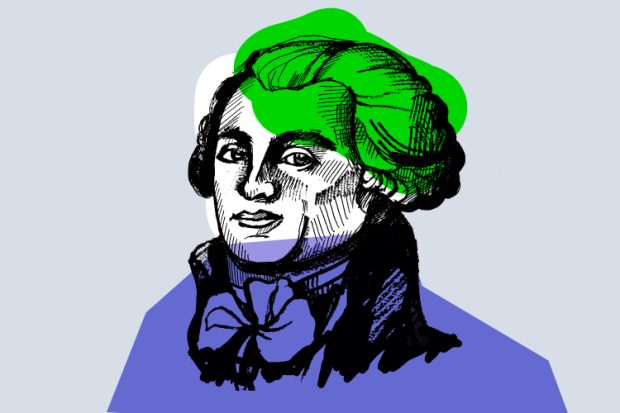
After Louis XVI tried to flee Paris in June 1791, there was a surge of republicanism. The Paris Jacobins lent their support to a petition to dethrone the king, but most of the club’s members disapproved and seceded to form a monarchical club meeting at another former convent, that of the Cistercian Feuillants. They tried to capture the Jacobins’ network of provincial affiliates, but most refused to join them. Meanwhile, the rump of the Jacobins was kept alive, though for the moment renouncing republicanism, by the efforts of Robespierre.
The Feuillants were committed to making the constitution work and supporting the king, but their moderation and exclusivism kept them far less popular than the reviving Jacobins, membership rapidly declined, and with the fall of the monarchy in August 1792, they disappeared.
The Cordeliers (named after yet another former convent where they met on the left bank of the Seine) were founded in the spring of 1790 as the Society of the Friends of the Rights of Man and the Citizen. From the start, they were always more radical than the Jacobins, being open to all comers, including women, and pressing for a more democratic franchise. It was here that Danton first made his name. The Cordeliers were responsible for the Republican petition which split the Jacobins in June 1791, and many of their members were casualties when the National Guard fired on the petitioners in the July ‘Massacre of the Champ de Mars’. After a period of persecution after that, the Club revived as a center of democratic radicalism and support in 1793-4 for the Terror but suffered when in the spring of 1794, its leaders were arrested and executed for criticizing the rule of the Convention. After the Terror ended, the club suffered the same, ultimately terminal, persecution as the Jacobins.

The Girondins were not a club at all. They were a group of vocal deputies in the Legislative Assembly and then the Convention who were named after spokesmen who represented the Gironde department, though most did not come from there. All were members of the Jacobin Club until they began to be expelled in the autumn of 1792. They did not form any sort of rival club, nor were they a political party, but they were bound together by hostility to the power of Paris over the National Convention. Eventually, the radicals of the capital successfully called for the expulsion of 29 deputies identified as Girondins in June 1793. In response, several provincial centers exploded into the so-called ‘Federalist Revolt’, but this only sealed the fate of the expelled deputies, who went to the guillotine in October 1793, protesting their continued commitment to the libertarian ideals of the Revolution. Their memory was only slowly rehabilitated after the end of the Terror.
Strictly speaking, there were no political parties as we understand them in revolutionary France. Contemporaries did not distinguish parties from selfish factions, more interested in private agendas rather than the public good. But the Jacobin network of clubs always strove to propagate something like a party line, and by the time of the Convention in 1793-4, they took their lead from the deputies of Paris and their allies who were known, from where they sat on the high seats of the assembly, as the Montagnards or Mountain Men. They included Robespierre, Marat, and Danton. They stood for republicanism and egalitarianism, an economy controlled by popular interests, a centralized power structure, and hostility to established religion. They specialized in democratic style and rhetoric, although while they were in power, they ruled through Terror. This bequeathed a problem to subsequent French history and its interpretation: could you have a democratic republic without Terror? Not until the Third Republic was established and survived after 1870 was it clear that you could? But when that republic stabilized, it adopted many of the slogans and was first espoused by the Jacobins in 1793-4. Thus, Liberty, Equality, and Fraternity as the national motto, free state education and a measure of social welfare, and laîcité – a state without religious affiliations. These are part of France’s ideology today, with all its fateful consequences for relations with Islam.
The Revolution also created powerful enemies. Counter-revolutionaries outraged by its attacks on the church and king constituted a sort of party. Much of the nineteenth-century French politics was a conflict between republicans and conservatives who wanted to ditch revolutionary legacies and bring back monarchy underpinned by religion – and in fact, the country was a monarchy of one sort or another for most of the time from 1804 down to 1870. The only defeat in the Franco-Prussian war of that year, and the refusal of monarchists to accept revolutionary legacies like the tricolor flag, opened the way for secularising republicanism to triumph.
Because there were no parties as we know them, there were simply shades of opinion about where the Revolution was going and where it should stop. Three great issues polarised participants in the French Revolution and tore it apart: religion, monarchy, and war. In religion, the question for revolutionaries was whether there should be a state church or no church. For counter-revolutionaries, the only acceptable solution was the restoration of the church as it had been before 1789. As regards monarchy, once again, counter-revolutionaries favored a return to the absolute authority of pre-revolutionary times. And if they were not outright Republicans, revolutionaries had to decide why a constitutional king was necessary and, if he was, how much power he should have. As to war, it was launched in 1792 as much for domestic and international reasons. The ostensible aim was to destroy counter-revolution. But should it be a limited war or an open-ended conflict with the whole European old regime? And should it be a war of liberation or of conquest?
There are no great unresearched issues in all this, but aspects of the perennial questions are being looked into all the time from new angles. We shall never be able to say that we need no more knowledge in order to understand such a complex topic.
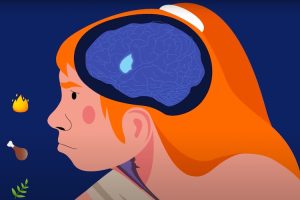
Archeologist Tim Reynolds on Mousterian tools, cross-species interactions, and Neanderthal language
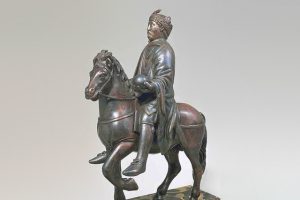
Historian Alexander Sidorov on the unique artifact of the Carolingian Renaissance — a mysterious statuette of ...
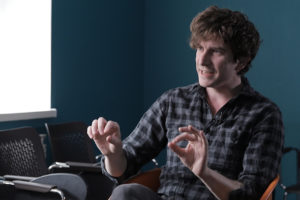
Historian Peter Jones on three theories of laughter, humour as a way of doing politics and how laughter was pe...